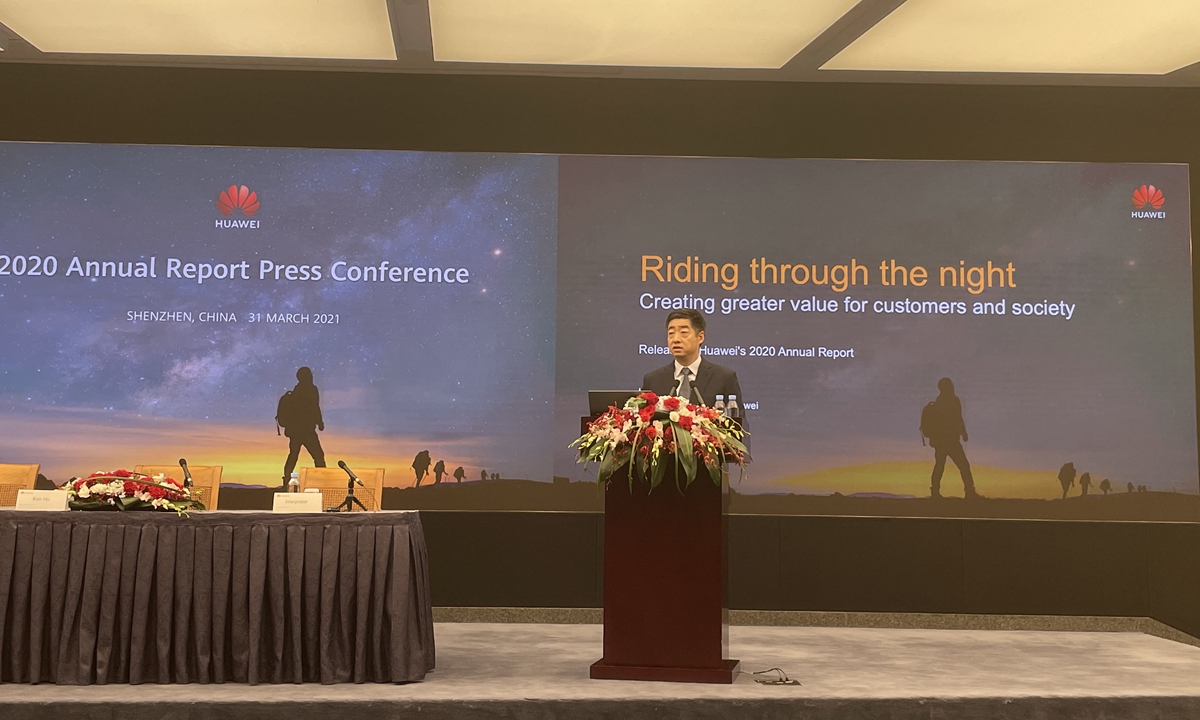Huawei’s revenue, profit both grow in 2020, but test will go on with US semiconductors ban

Photo: Shen Weiduo/GT
Chinese technology giant Huawei said it saw growth in both revenue and profit in 2020, meeting company targets despite the losses inflicted by the US government' blacklisting of its traditionally strong businesses.Revenue stood at 891.4 billion yuan ($135.93 billion) in 2020, up 3.8 percent year-on-year, while net profits rose 3.2 percent to 64.6 billion, the firm announced at a press conference titled ‘Riding Through the Night’ at its headquarters in Shenzhen, South China’s Guangdong Province on Wednesday.
Consumer business sector revenue reached 482.9 billion yuan, up by 3.3 percent year-on-year.
“Over the past year we've held strong in the face of adversity,” said Ken Hu, Huawei's rotating chairman, adding that the company's business performance was largely in line with company forecast.
“In 2020, our enterprise business group is growing rapidly, telco business remains stable, while consumer business sector growth is slowing down,” Hu said.
The strong 2020 report comes after Huawei was put on an export blacklist by former US President Donald Trump in May 2019, and US trade restrictions on the firm toughened over the past year.
Analysts said the growth indicated that Huawei’s “survival strategy”, which include promptly adjusting its business lines, have had an initial effect, while warning the test on the tech giant will continue.
“The cold winter has not come yet, and the impact from the US semiconductors ban will gradually be seen in its financial report this year,” Jiang Junmu, chief writer at Chinese telecom industry news website c114.com.cn, told the Global Times on Wednesday.
Jiang cautioned that the biggest impact will still occur in Huawei’s consumer division, which accounted for 54.2 percent of the company’s total sales in 2020. The consumer group overtook Huawei’s core networking equipment business to become the biggest business department in 2018.
In 2019, Huawei’s consumer business revenue went up by 34 percent, compared with 3.3 percent growth in 2020.
“It really depends on whether Huawei can find new and powerful growth points that can make up for the drop in the mobile phone business,” Jiang said.
Huawei has been looking at other sources of revenue as smartphone manufacturing and sales waned. Along with artificial intelligence (AI) technology rented for pig farmers, Huawei is also working with domestic coal miners and automakers, but analysts caution these businesses, in which Huawei mainly provides technology, may not be able to generate “enough revenue and profit” like its mobile phone business in the short term.
